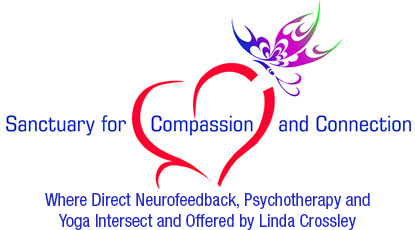5 Intention-setting Ideas to Sharpen the Skills of Connection
Happy New Year!
Almost a decade ago, when I was contemplating what to name my business, I knew that I wanted the word “connection” in it because of my personal transformation from connecting with my authentic self and then connecting with others. Making connections, and maintaining the health of those connections, continues to be at the top of my new year intention list.
Neuroscience has shown that humans are wired for connection. It is a basic human need that is necessary to thrive. However, that doesn’t mean all of us experienced healthy role models on how to stay connected to our authentic self and/or initiate, foster and deepen connections with others. For those of us that might think we are not good at connecting, not all is lost. Connecting includes skills that can be learned, practiced, and refined over time. It is definitely worth your time and effort!
Below are some intention-setting ideas for exploring and enhancing the skills that support connection:
- Be present. Setting aside time to be with others is important. Research has shown connecting with others promotes health and happiness. Yet it is not just the time we spend together. It is the gift of your presence that makes the difference. To be present requires us to pay attention. This means we need to eliminate as many distractions (AKA smart phones) as possible, let go of the myth that humans can multitask, and dial down our own internal dialogue maker that is trying to identify a follow up response before the person has finishing speaking. Yes, conversations are a two-way exchange and yet, perhaps try to notice beyond the person’s words for an underlying purpose or meaning for sharing. From there, consider simply expressing appreciation to the person for sharing with you. Then, watch their response!
- Listen deeply. This skill is tied very closely with being present, so bundling them together will make practice that much easier. To listen deeply to another, consider making eye contact with them, checking in with your body language to ensure it is open (i.e. avoid crossing your arms and legs as this is a more defensive posture), focusing on what the other person is saying with the intent to ask questions that are relevant or appropriate to what has been shared. By doing so, the other person will feel seen and heard and will prevent the “Oh, I had a similar experience” reaction from taking over the conversation. Contrary to popular belief, sharing your similar story does not necessarily make others feel seen and heard and, instead, can leave people feeling like you are in a competition for the best story (leading to less connection).
- Modulate your tone of voice. This skill is a bit more nuanced. It requires us to utilize variations in our pitch, pace, volume and inflection of our voice when speaking. Sometimes the conversation will call us to match the tone of voice of the person we are speaking with, such as when they are expressing excitement about something, and other times it will require us to soften our tone, especially if the emotion being conveyed might be fear, anger, or sadness. I have found that the more present I am in the conversation and the more deeply I am listening, my voice tends to modulate more naturally, as if it knows what tone is most needed in the moment for connection. Consider trying to match the tone of someone that is sharing something they found exciting to them to start practicing this skill. The more skilled you get with these subtle shifts in tone, the more you will notice your enhanced ability to connect with others in diverse situations.
- Apologize for mistakes. Being human means you will make mistakes. Making mistakes is how we learn as humans. And sometimes our mistakes impact other people. Unfortunately, when they do, most of us have not been taught how to own up to the impact and apologize for any harm it may have caused to the other person. Offering a meaningful apology is part of the formula for healthy and connected relationships. Apologies start with “I’m sorry.” Apologies that contain words such as “but” or “if” or “may” imply that the apology is conditional and does not reflect ownership to the mistake, increasing the likelihood of further disconnection. Healthy apologies that deepen connections are ones that are specific and sincere, reflecting ownership to the mistake and the impact it had on the other person, while sitting with the discomfort that the other person may not accept your apology. I know this intention might be a difficult one for many of us to implement. Perhaps the next time you sense the need to apologize to someone, consider writing it down first to ensure it conveys unconditional ownership to the mistake and it specifically addresses the impact the mistake had on the other person.
- Share. Deep connections with others require a willingness to reveal ourselves through sharing both our struggles and our joys. Yes, I mean we must embrace our vulnerability and begin to see it as our superpower. Sharing our vulnerabilities, including our fears and insecurities, allows others to experience us as fully alive humans moving through a complex world. This type of sharing opens the door to genuine and meaningful conversations by creating space for others to feel safe to do the same. Sharing vulnerable parts of ourselves builds trust, which, over time, deepens our relationships. If you choose to dip your toe into the pool of vulnerability, consider first to whom you might want to practice this skill with and second, what it is you might want to reveal about yourself. Take it slow and my suggestion would be to not dive into the deep end too quickly!








